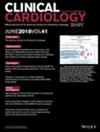Procedural Complications and Inpatient Outcomes of Leadless Pacemaker Implantations in Rural Versus Urban Hospitals in the United States
Abstract
Background
Disparities in invasive cardiovascular care and outcomes in rural and urban hospitals across the United States have been reported. However, studies investigating disparities regarding leadless pacemaker outcomes and complications based on hospital location are lacking.
Objective
To evaluate differences in outcomes and complications related to leadless pacemaker implantations among rural and urban hospitals.
Methods
The National Inpatient Sample was used to identify patients who underwent leadless pacemaker implantations in the United States from 2016 to 2020. Study endpoints assessed included procedural complications and inpatient outcomes of leadless pacemaker implantations among rural and urban hospitals.
Results
From 2016 to 2020, there were a total of 28 340 and 665 leadless pacemaker implantations in urban and rural hospitals, respectively. Baseline characteristics were similar among both groups, with notable exceptions of higher rates of coagulopathies (13.2% vs. 6.8%, p < 0.001) and peripheral vascular disorders (10.4% vs. 4.5%, p < 0.001) among urban patients. After multivariable adjustment for confounding variables, leadless pacemaker placements occurring in rural hospitals had lower odds of major complications (aOR 0.59, 95% CI 0.41–0.86), but increased odds of inpatient mortality (aOR 1.70, 95% CI 1.21–2.40). Overall, rural leadless pacemaker recipients experienced lower rates of discharge to home, as well as lower costs and length of stay.
Conclusions
A majority of leadless pacemaker implantations occurred in urban hospitals in the United States. Important differences in outcomes were described based on urban and rural hospital location. Further investigation and policy changes are encouraged to promote improved cardiovascular care and outcomes in rural residents.


 求助内容:
求助内容: 应助结果提醒方式:
应助结果提醒方式:


